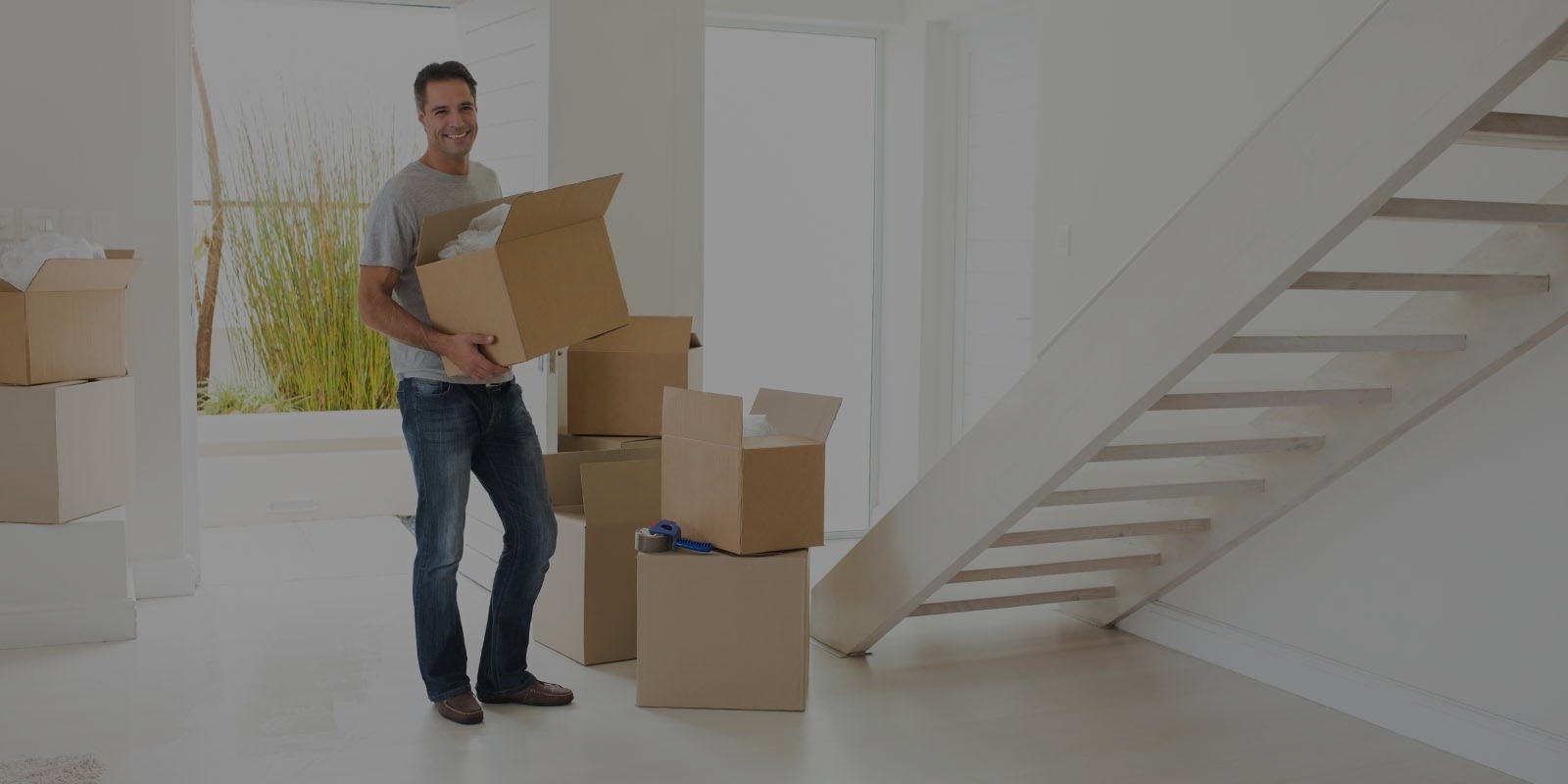Simple Strategies for Packing Properly When You Move
Posted on 21/05/2025
Simple Strategies for Packing Properly When You Move
Moving to a new home is an exciting adventure, but packing properly for a move can often seem overwhelming. With limited time and countless belongings, it's all too easy to lose track of items or feel stressed. However, with the right approach, packing for a move can be efficient, organized, and even enjoyable!
In this comprehensive guide, we outline simple strategies for packing when you move to ensure a smooth and stress-free transition to your new home. Whether you're seeking packing tips for moving long-distance or just down the street, these methods will help you save time, protect your belongings, and make the process more manageable.

Why Proper Packing Matters When You Move
Poorly packed boxes can lead to broken items, lost belongings, and frustration upon arrival at your new house. On the other hand, efficient packing strategies for moving help to:
- Protect fragile and valuable items from breaking or getting scratched
- Make loading and unloading faster and safer
- Ensure easier unpacking and organizing in your new space
- Prevent damages and costly replacements
Plan Ahead: The First Step of Proper Packing for Every Move
The key to packing properly for your move is to plan in advance. Rushing at the last minute often leads to forgotten essentials or damaged heirlooms. Here's how you can set yourself up for success:
1. Create a Moving Checklist
A comprehensive moving checklist helps you keep track of every step, from collecting supplies to confirming your moving date. Your moving checklist should include:
- Booking a moving company or truck rental
- Gathering packing materials
- Sorting and decluttering rooms
- Labeling boxes and preparing essentials
- Scheduling utility cancelations and address updates
2. Gather Quality Packing Materials
Before packing anything, make sure you have the right materials. Quality supplies are a must for safe storage during your move. Stock up on:
- Sturdy moving boxes in various sizes
- Packing tape and reusable plastic containers
- Bubble wrap, newspaper, or packing paper for cushioning
- Permanent markers and colored labels
- Scissors and utility knives
- Stretch wrap and furniture covers
Pro Tip: Don't use old, flimsy boxes, as they can easily break and cause items to spill out during transit.
3. Set Up a Packing Station
Dedicate a corner of your home as a packing zone. Keep all packing materials, labels, and filled boxes organized here. This minimizes chaos and ensures you always know where your supplies are.
Declutter Before You Begin Packing
One of the most effective packing strategies for moving is to declutter before you begin. Moving offers a unique opportunity to streamline your possessions. Follow these steps:
Sort Room by Room
- Go through clothes, books, kitchen items, and decor
- Set aside anything you haven't used or worn in the past year
- Don't forget basements, garages, and attics, which often collect extras
Donate, Sell, or Toss
- Donate gently-used clothing, toys, or furniture to charities
- Sell valuable or lightly-used items online or at a garage sale
- Recycle or dispose of broken or unusable items responsibly
Reduce Unnecessary Packing
The fewer items you pack, the simpler your move will be. By only transporting what you use and love, you'll save on supplies, time, and moving costs.
Packing Room-By-Room: How to Organize and Protect Your Belongings
Breaking your packing process into rooms makes the task less daunting and helps maintain order. Here's a step-by-step approach:
Start With Non-Essentials
- Pack items you use the least first--seasonal clothes, holiday decorations, and seldom-used cookware
- Label each box with the room and category (e.g., "Kitchen - Serving Dishes")
Pack One Room at a Time
Tackle each room individually to keep items organized and minimize confusion during unpacking. Use this opportunity to clean as you go, leaving rooms tidy behind you.
Use the Right Size Boxes
- Small boxes: Books, tools, fragile decor
- Medium boxes: Electronics, small appliances, toys
- Large boxes: Soft bulky items like bedding and winter coats
Avoid overloading boxes, especially with heavy items, as this can lead to breakage or injury during lifting.
Expert Packing Tips for Every Category
Each type of belonging requires unique care. Here are some packing best practices for common household items:
Packing Glassware and Dishes
- Wrap each piece separately in bubble wrap or packing paper
- Line boxes with extra cushioning at the bottom and top
- Pack plates vertically like records to reduce the risk of breaking
- Don't overfill boxes; fill empty spaces with crumpled paper to avoid shifting
Packing Clothing
- Keep clothes on hangers and place them right into garment bags or wardrobe boxes
- Roll t-shirts, jeans, and casual wear to save space and reduce wrinkles
- Pack off-season clothing first
Packing Electronics
- If possible, use the original packaging for TVs, computers, and monitors
- Label and photograph how cables are connected before unplugging
- Wrap electronics with anti-static bubble wrap and mark boxes as "FRAGILE"
Packing Books and Papers
- Use small boxes and stack books flat to prevent spine damage
- Protect valuable cookbooks or photo albums by wrapping them in plastic
- Purge old documents and shred before moving to save space
Packing Furniture
- Disassemble furniture if possible; keep screws and bolts bagged and taped to the furniture piece
- Use furniture blankets and stretch wrap for protection
- Remove legs from tables and wrap each piece individually
Essential Packing Supplies Checklist
Make sure you have the following items on hand for proper packing when you move:
- Sturdy boxes in various sizes
- Packing tape and dispenser
- Bubble wrap, packing paper, and foam peanuts
- Stretch wrap for furniture
- Markers, labels, and color-coded stickers
- Scissors, box cutters, and a measuring tape
- Plastic bags for hardware and small parts
- Blankets or towels for extra cushioning
Organize and Label Boxes for Effortless Unpacking
Labeling is one of the simplest yet most effective strategies for packing when you move. Detailed labels let you--and your movers--know where every box goes, so you can settle in quickly. Consider these methods:
Use a Color Code System
- Assign a color to each room (e.g., blue for bathroom, yellow for kitchen)
- Use colored stickers or tape on boxes and create a master key for quick identification
Number Every Box
- Number boxes and keep a running inventory on your phone or notepad
- Note contents and destination room for each number
Add Special Instructions
- Mark boxes "FRAGILE" where necessary
- Label which side is up for sensitive items
- Add "Open First" to boxes with essentials like toiletries and snacks
Pack an 'Essentials' Moving Box
Moving day is hectic, and it's common to arrive at your new home tired and unable to unpack everything right away. Pack a clearly-labeled essentials box containing:
- Toiletries, medications, and a change of clothes
- Chargers for electronics
- Paper towels, soap, and basic cleaning supplies
- Important documents, keys, and wallets
- Snacks and bottled water
- Bedding and towels for the first night
This box should travel with you--not the moving truck--so you have everything you need as soon as you arrive.
Protect Yourself and Your Movers
Proper packing isn't just about your stuff--it's also about staying safe. Here are a few safety tips:
- Keep walkways and stairs clear of boxes
- Don't overpack boxes--aim for a manageable weight (under 50 lbs/22 kg)
- Bend your knees and lift with your legs, not your back
- Communicate clearly with your movers or helpers
Making the Most of Professional Movers
If you're hiring professional movers, proper packing will make their job easier and help protect your possessions. Ask your movers about:
- Insurance policies covering damages or lost items
- Required labeling and specific box weight limits
- Preferred methods for packing specialty items
Unpacking: The Final Step in a Smart Move
Once you arrive at your new home, efficient unpacking starts with all your boxes being clearly labeled and organized by room. Begin by:
- Bringing in your essentials box for immediate needs
- Setting up bedrooms and bathrooms first for a comfortable first night
- Gradually working through the rest of your boxes, tackling one room at a time

Frequently Asked Questions
How early should I begin packing before moving day?
Start packing non-essentials 3-4 weeks before your moving date. Leave daily necessities until the last week. The earlier you start, the smoother your move will be.
What is the best way to move fragile items?
Wrap fragile items individually with bubble wrap, pack them snugly in sturdy boxes, and fill gaps with packing paper or foam. Mark boxes as "FRAGILE" and transport these yourself if possible.
Is it worth labeling every box in detail?
Absolutely. Detailed labels save immense time and stress during unpacking. Use a simple inventory sheet to track box numbers and contents.
Conclusion: Keep Moving Simple With Smart Packing
Packing for a move doesn't have to be stressful. By following these simple strategies for packing when you move, you'll protect your valuables, streamline the process, and make settling into your new home a breeze. Remember, the secret to proper packing for moving lies in planning, organizing, and using quality supplies. Start early, stay systematic, and let your next move be your easiest yet!
Happy moving!







